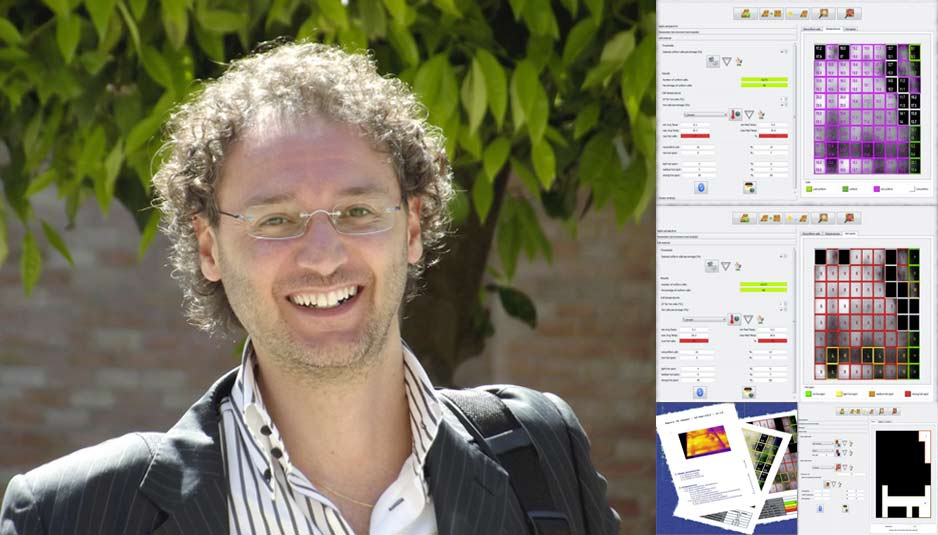DiSS – Diagnostics for Solar Systems, Vergura’s project

A few months ago, prof. Silvano Vergura of Dep. Of Electrical and Information Engineering (DEI), Polytechnic of Bari, had announced at Close-Up Engineering the completion of a software able to assess what and how many solar cells of a module are defective. At this point, it is time to reveal what it is.
The photovoltaic modules available on the market have relatively low efficiency, between 10% and 20% depending on the material used (silicon, cadmium telluride, etc.), therefore, decrease of efficiency (even a few percentage points) can greatly affect the overall electrical performance of the entire PV system. It is also known that almost always the greater the more solar radiation increases the efficiency, but decreases with increasing temperature of the cell, then an over-temperature is always to be avoided. Moreover, because the cells of a photovoltaic module are connected in series, the malfunction of a cell affects performance of the entire photovoltaic module.
But what are the origins of a defect in a solar cell?
Fig. AThe anomalies of the photovoltaic cells are due either to the production process (process-induced) or material (material-induced), but in each case manifest as over-temperature: for this reason, diagnostic techniques based on thermography are enjoying considerable success.
The instrument usually used to check the presence of defects in a photovoltaic module is the thermo-camera, a device like a video camera but is sensitive to temperature differences (Fig. A); hottest spots are color whitish, points have colder colors toward black. In recent times, in fact, the thermo-cameras are also used to promptly intervene in case of forest fires, exploiting their sensitivity to heat.
However, not always the thermal images (or infrared) allow to define unambiguously the health status of the module, and because the cameras have a relatively low resolution (640×480 pixels is considered to have high resolution), and because the information of a ‘thermal image are purely qualitative (Figure A).
Furthermore, the thermal images are sometimes affected by noise (the well-known “parchment” effect), so it is not easy to distinguish a real over-heating from one apparent, so that in these cases it is necessary also an infrared images pre-processing, in order to carry out the evaluation on a “cleaned” image.
Companies producing thermo-cameras also propose thermal images treatment software, but they are so-called general-purpose software, that is valid whatever the image captured by the thermo-camera. This implies that such software, despite the great versatility of use, require many manual operations by the operator and, consequently, much time. If you think that the large photovoltaic systems may consist of more than 5000 modules up to a few tens of thousands, is well understood that a time saving in the analysis of a single image must be multiplied by 5000 or more.
It is at this point that Vergura’s innovative software comes. In order to optimize the processing time of the infrared images of photovoltaic modules, it has been proposed an innovative diagnostic workflow for modules in monocrystalline silicon. The automation of the diagnostic process has been implemented in a software platform (DISS), by the Spin-off APIS of the Polytechnic of Bari, under the supervision of Prof. Vergura. In fact, although few details have to be entered by the operator (environmental parameters, critical thresholds for classification of cells, etc.), to a PC you can delegate almost all operations, from processing of thermal images up to automatic generation of a report of analysis, bearing the diagnosis of each cell module, in both graphical and numerical.
This allows an optimization of working times and uniformity in the presentation of the final reports to the customer. At the moment this is a unique software of its kind, since even the manufacturers of thermo-cameras, mostly foreign, have to catalog similar software, specific for the analysis of photovoltaic modules.
To be more specific, giving consideration to the most interested, The following is the method of image analysis performed by the software DiSS.
©Close-up Engineering – All rights reserved